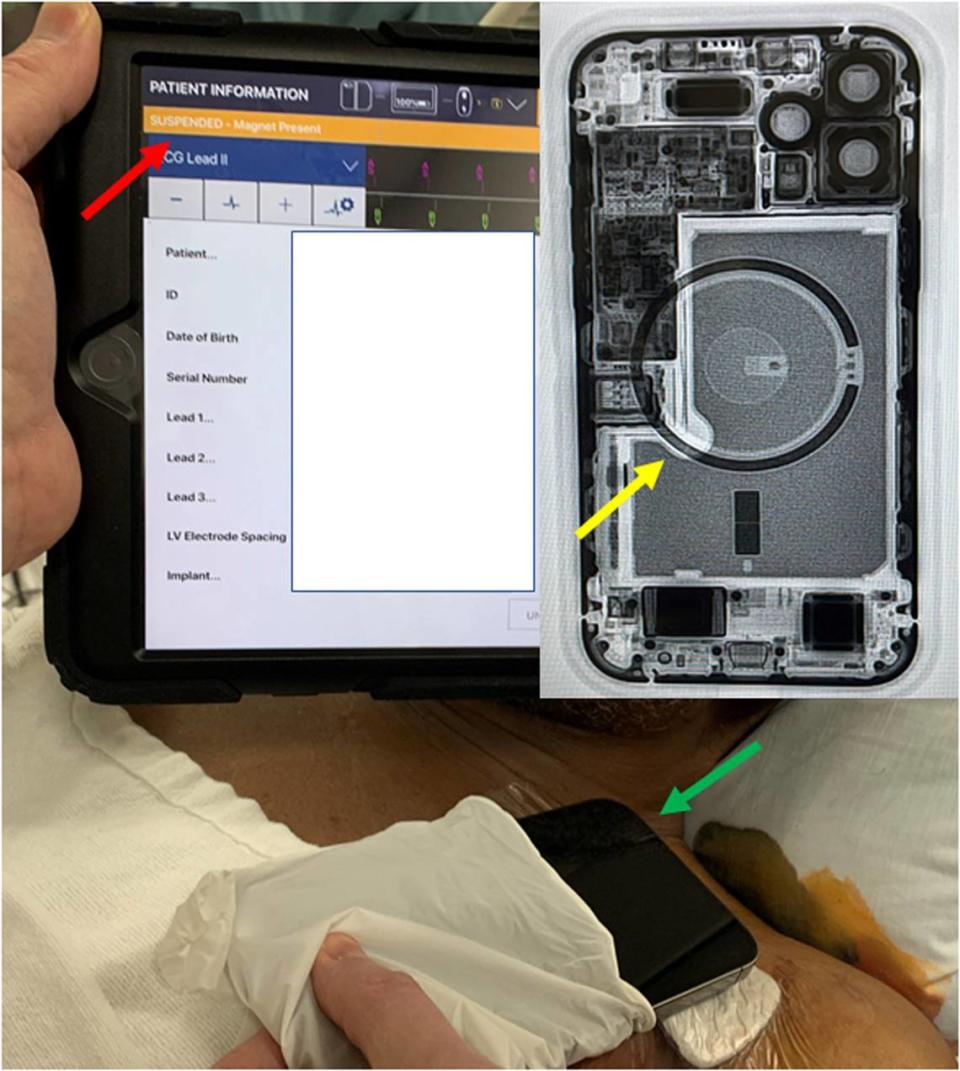Keep the iPhone 12 away from your heart implants, Apple and doctors say. Here’s why
Three cardiologists warned in early January that the newest iPhone 12 could potentially interfere with lifesaving implanted medical devices such as defibrillators and pacemakers.
The Michigan physicians cited the “immediate suspension” of one patient’s defibrillator — a device that restores normal heartbeat by sending an electric pulse or shock to the organ — when an iPhone 12 was brought close to the person’s left chest area during an experiment. The team hovered the phone over the same region in different positions, receiving the same results each time.
They blame a circular array of magnets embedded in the iPhone that emit electromagnetic fields. The magnets help connect the phone to “MagSafe” wireless chargers, another Apple product with magnets and radios, according to their study published Jan. 4 in the journal Heart Rhythm.
These electromagnetic fields, the doctors say, interact with sensors in medical devices in a way that renders them defective. The interference can happen accidentally if someone carries their iPhone in their shirt pocket, for example, they add.
Apple has acknowledged this magnetic battle before, but it released more information Saturday about how to ensure their products aren’t putting lives in danger.
“iPhone contains magnets as well as components and radios that emit electromagnetic fields...[that] might interfere with medical devices,” Apple said. “To avoid any potential interactions with these devices, keep your iPhone and MagSafe accessories a safe distance away from your device (more than 6 inches / 15 cm apart or more than 12 inches / 30 cm apart if wirelessly charging). But consult with your physician and your device manufacturer for specific guidelines.”

However, the company said there’s no need to worry about extra harm from newer iPhone products.
“Though all iPhone 12 models contain more magnets than prior iPhone models, they’re not expected to pose a greater risk of magnetic interference to medical devices than prior iPhone models,” Apple said.
The doctors said physicians with patients with certain implanted medical devices should be cautious.
“We hereby bring an important public health issue concerning the newer generation iPhone 12 which can potentially inhibit lifesaving therapy in a patient particularly while carrying the phone in upper pockets. Medical device manufacturers and implanting physicians should remain vigilant in making patients aware of this significant interaction of the iPhone 12 and other smart wearables with their cardiac implantable electronic devices,” they said.

 Yahoo Finance
Yahoo Finance 